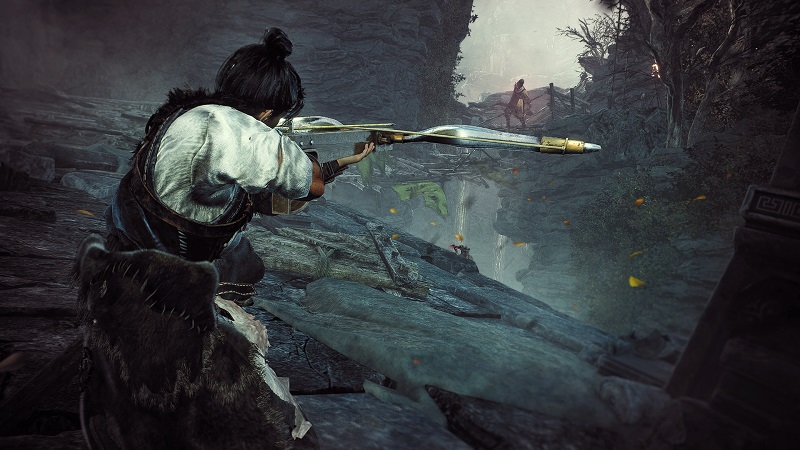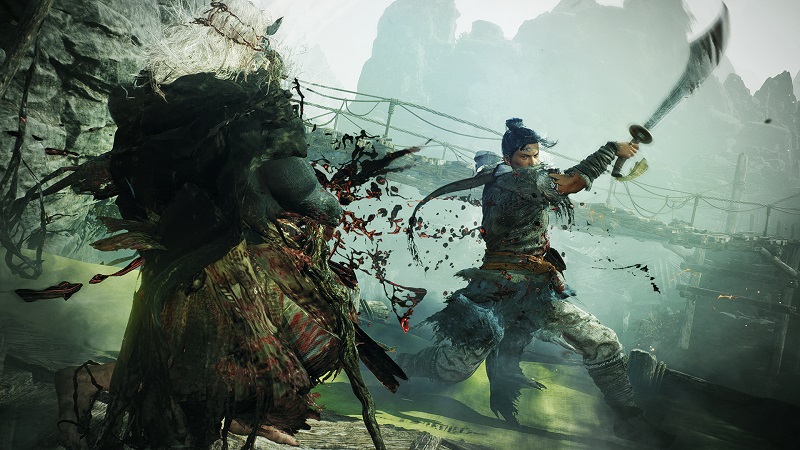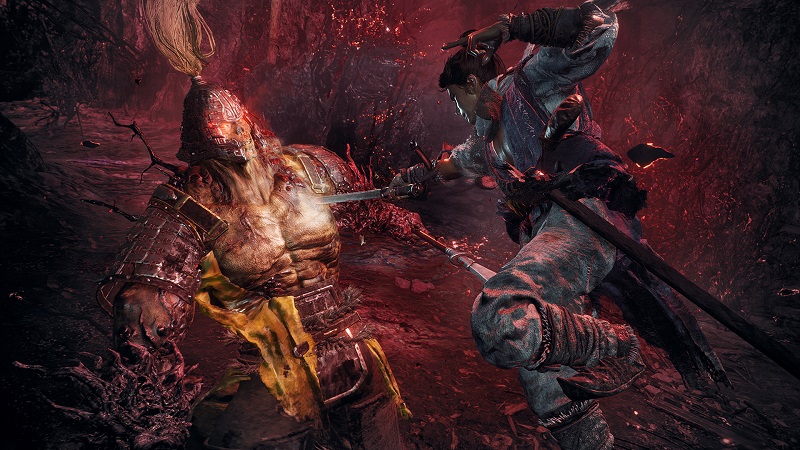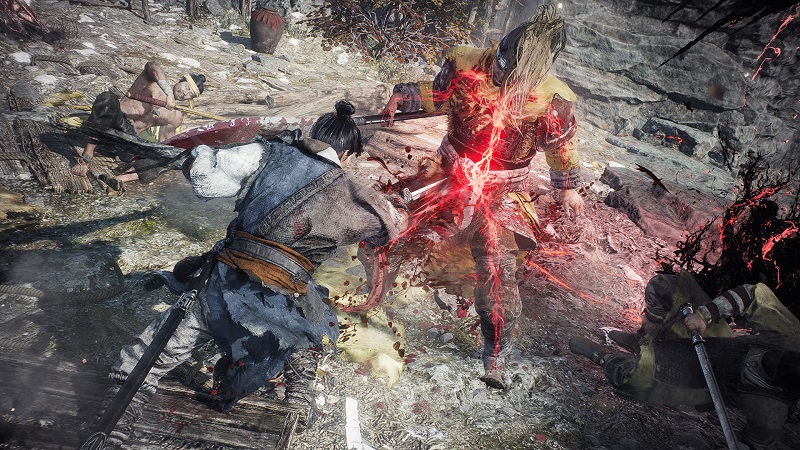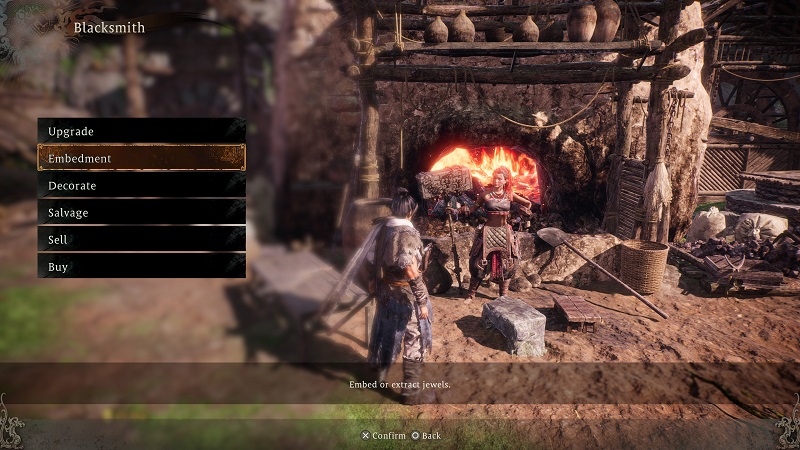
Wo Long: Fallen Dynasty PS5 Review. With the unparalleled success of FromSoftware’s Elden Ring last year, it’s safe to say that we’ve not yet hit the inflection point for games that occupy similar territory.
That is, games that actively push back and beat you to a pulp if you let your guard down for a moment. To certain players, the Nioh series has come closest to hitting the levels of praise reserved for the likes of the Bloodborne and Sekiro: Shadows Die Twice but they are ultimately different sets of games in both composition and focus.
Wo Long: Fallen Dynasty PS5 Review
High-Octane Combat Sings In Team Ninja’s Latest Outing
Developer Team Ninja has continued to hone its particular take on the budding genre with Wo Long: Fallen Dynasty, an effort aiming to trim the fat in favour of employing a more immediate combat system, all the while retaining the loot and gear-based trappings it has become known for.
For those familiar with Nioh 2, the run of play here may at first glance appear markedly similar, from its comprehensive character creation – which includes forehead wrinkles and laugh lines, no less – to its general design ethos and graphical presentation.
Aside from taking place during the Chinese Three Kingdoms era rather than Sengoku era Japan, this is true to a large extent, which is slightly to its detriment, but what’s core to Wo Long: Fallen Dynasty’s own identity is undoubtedly the changes made to its combat.
Taking a leaf of the aforementioned Sekiro’s book, (which will be a running theme) things are decidedly more distilled this time around; gone is the ‘Ki Pulse’, weapon stances, and associated skill trees that featured predominantly in its forbearer Nioh, and instead they have been replaced by a system that demands that you play on the front foot, aim to deflect incoming attacks, gain abilities, and break the enemy’s poise to gain the upper hand.
This is achieved firstly by the ‘Spirit Gauge’, which is for all intents and purposes the game’s stamina system. Starting in a neutral position, your Spirit Gauge is positively affected by basic attacks you perform as well as successful deflections; as the meter grows this will allow you to use specialized attacks called ‘Martial Arts’ as well as different spells.
If, however, you sustain too many attacks your gauge will deplete and you’ll be left vulnerable, in addition to not being able to avail of any of your more specialized move set.
The chief driving force for a positive swing in Spirit Gauge is undoubtedly the deflect mechanic, which is performed by a tap of circle right before an opponent’s attack lands. When timed correctly, a deflect will grant you a sizeable amount of Spirit while at the same time have the inverse effect for your opponent which is crucial for opening windows to deal significant damage.
That said, it’s possible that the deflect mechanic won’t resonate fully at first as it doesn’t perhaps feel as innate or absolute as what is found in Sekiro, and as a consequence you may inadvertently get funnelled down a path of simply absorbing attacks by blocking before getting a couple of hits in against many of the earlier bosses.
But like FromSoftware’s samurai opus before it in the battle against Genichiro Ashina atop of Ashina castle, Wo Long also features a boss within the fourth region that serves to test your understanding of the game’s mechanics and is one that you can’t simply brute force. From then on, combat begins to click and once you’re fully in sync with the terms that the game’s mechanics have set out, the level of satisfaction is palpable. But with that, there are added layers at play that allow you to tailor the experience to a degree and introduce a level of risk versus reward.
This is delivered via Wo Long’s ‘Morale’ ranking system, a mechanic which ostensibly acts a real-time difficulty slider and one that permeates, informs, and interacts with many facets of the moment-to-moment gameplay.
Independent of your standard levelling up by way of spending the game’s experience points, Qi, across the five ‘phases’ – fire, wood, metal, earth, water – Morale Ranking allows you to decipher the potential difficulty of every enemy you encounter throughout a specific stage and adjust accordingly.
At the beginning of a mission, your Morale Rank will be set to zero, and can be increased up to a maximum of twenty-five by defeating enemies or utilizing the game’s more specialized abilities, such as Martial Arts attacks.
In practical terms, the higher you get your Morale Rank – effectively a way of signifying your growing confidence and form – the less damage you take, the more potent your summon will be, and what’s more, you’ll also gain access to certain Wizardry Spells that are each locked behind a base Morale Rank number.
Conversely, each enemy in the game also has a Morale Rank assigned to them and a colour to denote their difficulty. If the number aligns with yours or is below it will be green, if the number is between one-to-four points higher than yours it will be orange, and five and above will be red.
This will give you an indication of the amount of challenge you can expect and if you opt to tackle enemies that are within the ‘red’ category and manage to defeat them, there will be an increased drop rate for rare items.
What ratchets up the tension and provides an air of jeopardy is the ability to lose your Morale Points, as this has a tangible effect on the difficulty of the game – if you don’t deflect or get out of the way of a Critical Blow for instance (which can be delivered by all enemies) you will be demoted one rank, and reciprocally the enemy will gain one and become a target who, if defeated, will allow you to reclaim your lost Morale Points and Qi.
In a bid to encourage exploration and also to ensure that the Morale mechanic is better balanced in light of its inherent risks, Wo Long’s flag system is a clever way to account for this.
Scattered throughout each level in the game’s seven regions are both Marking Flags and Battle Flags, the former of which will increase your ‘Fortitude Rank’ which is obstinately the floor of how far your Morale Rank will go down if you die or get hit by repeated Critical Blows. The inclusion of a ‘jump’ button also allows for the Marking Flags to be placed out of sight and thus it’s worth your time exploring the region thoroughly so that you can raise your Fortitude Rank and limit the impact of any inevitable deaths.
The more Marking Flags you find the higher your floor – or indeed ‘safety net’ – will be as it were. Battle Flags, however, are a little more comprehensive and work like your standard checkpoints in games of similar ilk, where happening upon one will reset your health, act as a point from where you respawn after death, and of course will raise your Fortitude Rank.
All told, this system is well realized and offers a level of flexibility to how you want to tackle each encounter, rather than solely relying on specific builds for bosses (though this can also be facilitated) you can grind up until a point to better align yourself or even surpass the Morale Rank of the enemy or boss that is giving you trouble. That is, if you don’t get hit by any flailing Critical Blows which is a common occurrence if you find that you’re in the midst of mob of enemies.
On the contrary, you can challenge yourself by deliberately tackling higher ranked enemies with the chance of getting better rewards – it also means you’ll bypass the associated grind with raising your Morale Rank to the maximum allowed. Still, purity of these types of games notwithstanding, it’s probably still shorter than the traditional method of beating your head against a particular boss for hours at a time.
Perhaps not to the same extent as Nioh 2, the game also offers a bevy of options to customize and upgrade you gear as you would expect – from the usual +1 upgrades to weapons and armour to differing degrees of rarity and rolls when it comes to associated buffs. Though there aren’t any skill trees for weapons per se, your setup is malleable enough that you shouldn’t be short of options when it comes to creating a character that suits your playstyle best.
As is likely apparent, it’s worth bearing in mind that Wo Long’s primary focus appears to be its mechanics and underlying systems, and though its art design is often worthy of praise its overall graphical prowess isn’t its strongest point as it doesn’t feel miles apart from Team Ninja releases on lesser capable systems. Performance and loading times are typically up to snuff, mind, apart from the odd slight stutter in the latter half of the game. Unfortunately other features such as Sony’s DualSense controller don’t receive any love of note sadly.
A further wrinkle and one that plays into the wider factional interplay of the Three Kingdoms era is the game’s version of the summons mechanic which is oftentimes seen in the genre. Many of the story missions will see you accompanied with a NPC who is useful for absorbing aggro and dealing damage but you can also call upon an ally to enter the fray and provide additional muscle via a Battle Flag.
Doing so requires an item and the allies available differ from mission to mission, but once you’ve summoned you’ll avail of that ally’s buff and if you use the same one persistently your ‘Oath level’ will rise which will in turn grant additional buffs to your character. If you raise this level to its maximum, you’ll also be given the ally’s equipment set to use for yourself.
It must be reiterated, though, that Wo Long’s key innovation by way of its Morale Rank mechanic alongside the inclusion of its spirit/deflect system and support functions are all ultimately wrapped in a sense of déjà vu for anyone who is versed in Koei Tecmo’s earlier Nioh games.
This shared DNA extends to similar region and level structures, coupled with Divine Beast summons that are not dissimilar to Guardian Spirits, and a version of Nioh 2’s Hidden Teahouse whereby you pay a currency – in this instance it’s ‘Accolade’ instead of ‘Glory’ – to roll a dice and potentially pick up rare weapons.
These are perhaps the more granular comparisons but on the surface Wo Long is visibly cut from the same cloth, and though it deviates in its underlying combat mechanics, how successful the game is will ultimately boil down to what you took from Nioh and if a game that aims to accentuate the risk/reward of parry-based combat speaks to you on a fundamental level.
With that, though that through line is very much evident, if you’re never experienced Nioh but have a penchant for deep mechanics and a rewarding experience, there is a lot to love here. For others your mileage may vary given the air of familiarity, but there’s little to deny that Wo Long: Fallen Dynasty delivers on its promise to provide high-octane, high-stakes combat and is thoroughly recommended for anyone eyeing up a challenge.
Wo Long: Fallen Dynasty releases on PS4, PS5, on March 3.
Review code kindly provided PR.
